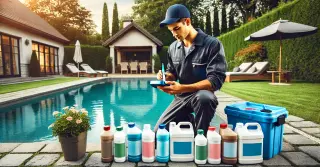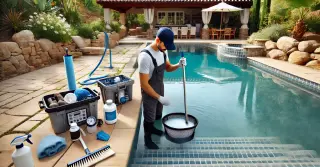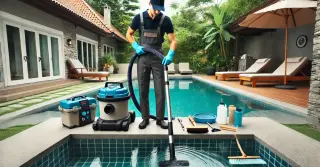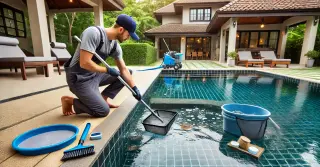Pool Chemical Balance Darlington PA

Keeping your pool's chemical balance in check is crucial for a safe and healthy swimming environment. Balanced chemicals inhibit algae and bacteria, keep the water clear and clean, and protect the pool's surface and equipment.
- Balancing pH Levels: The pH level of your pool water reflects its acidity or alkalinity. Optimal pH levels range from 7.2 to 7.6. If the pH is too low, the water becomes acidic, which can cause skin irritation and corrosion of pool equipment. If the pH is too high, the water becomes alkaline, leading to cloudy water and scaling on the pool surfaces. Frequent pH testing and adjustments is vital for swimmer comfort and safety.
- Keeping Chlorine Balanced: Chlorine is a key component in pool sanitation, as it kills bacteria, algae, and other harmful microorganisms. Optimal chlorine levels range from 1 to 3 ppm. Too little chlorine can lead to unsanitary conditions, allowing bacteria and algae to thrive. High chlorine levels result in skin and eye irritation and create a strong chlorine smell. Frequently checking and balancing chlorine levels ensures sanitation and comfort.
Optimal Alkalinity LevelsTotal alkalinity is another critical aspect of pool water chemistry. Alkalinity acts as a buffer for pH levels, helping to prevent drastic changes in pH. The optimal total alkalinity range is 80-120 ppm.
- Avoiding pH Fluctuations: Balanced alkalinity stabilizes pH levels, preventing rapid changes that can cause skin irritation and damage to pool surfaces. If alkalinity is too low, pH levels can fluctuate wildly, making it difficult to maintain a consistent balance. High alkalinity causes cloudy water and scaling. Regularly testing and adjusting alkalinity levels is essential for maintaining a stable and balanced pool.
- Calcium Hardness Control: Calcium hardness refers to the amount of dissolved calcium in the pool water. Proper calcium hardness levels range from 200 to 400 ppm. If calcium levels are too low, the water becomes corrosive, damaging pool surfaces and equipment. Excessive calcium causes scaling and water cloudiness. Consistently monitoring and adjusting calcium hardness is essential for pool protection and clear water.
Using Pool Chemicals SafelyHandling and storing pool chemicals properly is vital for safety and chemical performance. Chemicals should be stored in a cool, dry place, away from direct sunlight and out of reach of children and pets. Follow the manufacturer's instructions for correct dosing and application.
- Measuring and Mixing Chemicals: Measuring pool chemicals accurately is crucial for maintaining balance. Inaccurate dosing can disrupt the chemical balance and affect water quality. Always use a clean, dry measuring cup or scoop and never combine chemicals directly. If needed, mix chemicals in water as per instructions.
- Chemical Reaction Awareness: Certain chemicals can react dangerously if mixed. For example, chlorine and acid should never be mixed. Understanding these interactions helps prevent accidents and ensures safe handling. Store chemicals separately and handle each with care to avoid dangerous reactions.
Ensuring the right chemical balance in your pool is crucial for safety, cleanliness, and enjoyment. By frequently testing and balancing pH, chlorine, alkalinity, and calcium, you maintain optimal water conditions.
Proper chemical use and storage further ensure the health and safety of your pool and its users.




